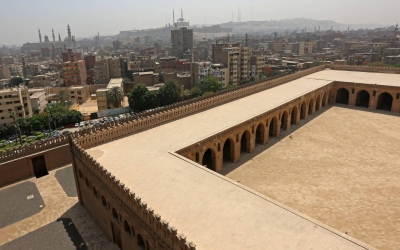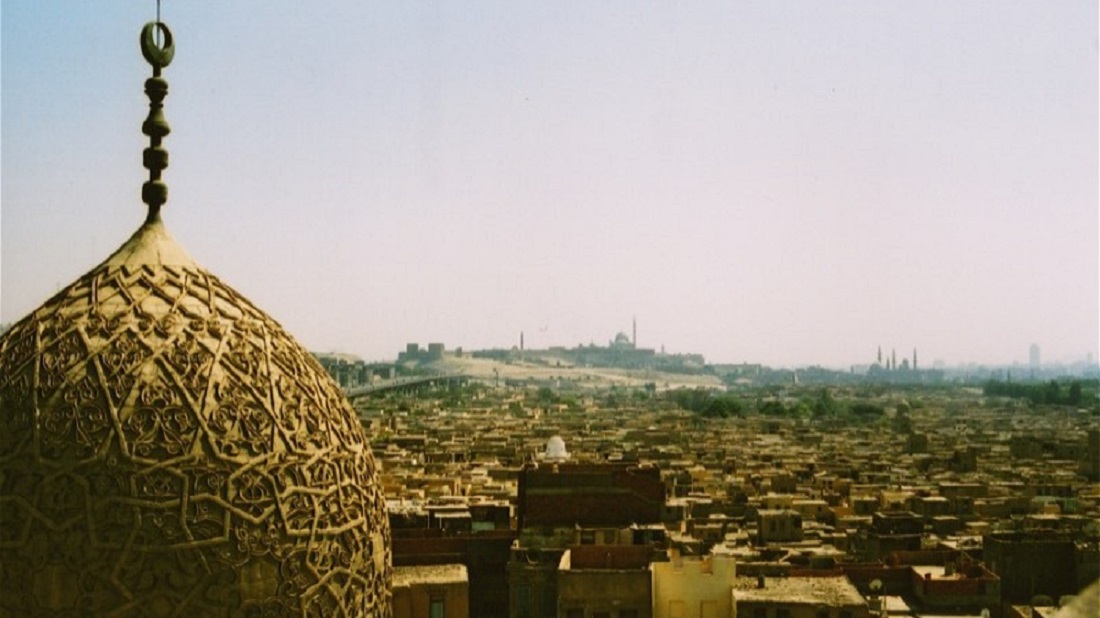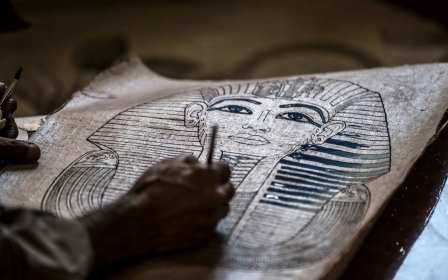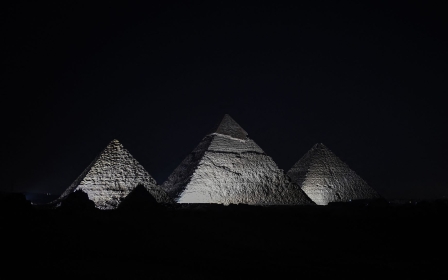Egypt: Activists raise concerns over damaged artefacts in historic City of the Dead
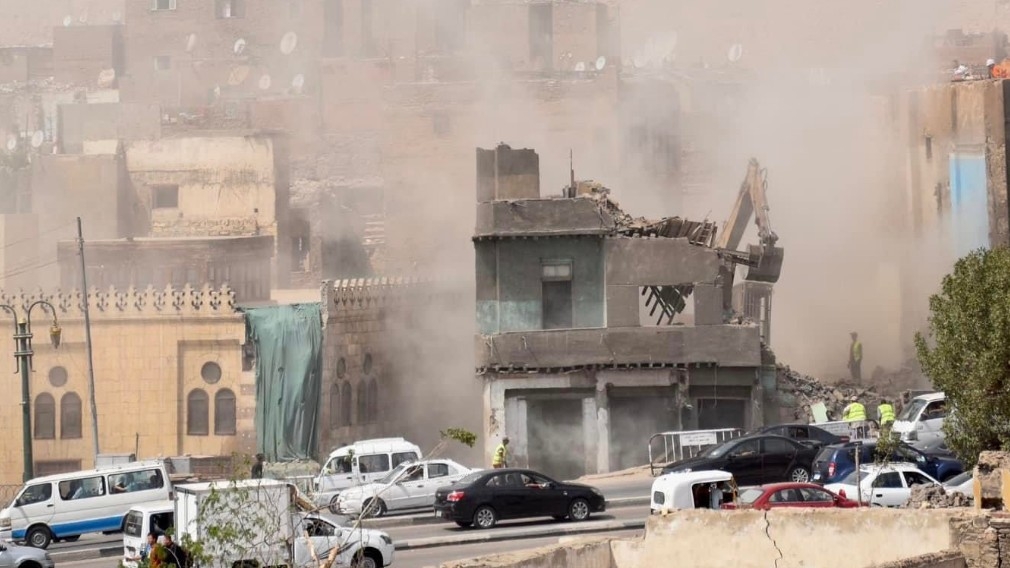
Egyptian conservationists and activists are raising serious concerns about the potential damage to centuries-old artefacts and structures in Cairo’s historic City of the Dead.
Authorities plan to build a new highway connecting central Cairo with President Abdel Fattah el-Sisi’s new but controversial administrative capital, but opponents of the idea say that not enough regard is being paid to the damage the plans could cause to heritage sites.
The City of the Dead is a medieval necropolis in central Cairo, which began as a graveyard but eventually turned into a thriving neighbourhood.
It is famous for its tombs that have been converted into residential homes.
Over recent weeks, activists have shared viral posts of old artefacts being unearthed in the area amid construction work.
New MEE newsletter: Jerusalem Dispatch
Sign up to get the latest insights and analysis on Israel-Palestine, alongside Turkey Unpacked and other MEE newsletters
One popular Twitter account, Blue Cairo, reported that a stone tablet more than a thousand years old and written in Kufic Arabic script had been discovered during construction work in the City of the Dead.
Activists are using an Arabic hashtag meaning "save Egypt’s cemeteries" to raise awareness about the damage being caused, including to cemeteries containing tombs of historic figures.
Typifying the reaction, one social media user decried the situation as a "catastrophe" and said that "layers of Egypt’s history, 1,400 years old, are disappearing for a road to expand".
Some have also shared photos of volunteers hastily making their way to the site to save the remaining artefacts that have been tossed aside, amid rubble and between bulldozers.
يسابقون الزمن ويسارعون الى ما تطاله ايديهم لانقاذه من مخالب الحفارات وانياب الجرارات.. شباب من مصر يحاولون بشتى الطرق انقاذ ما يمكن إنقاذه.. قطع رُخام منقوشة بالفارسية، وشواهد قبور تخطى عمرها 1223 سنة بالخط الكوفي المورق غير المنقوط، طربوش تراثي أبيض من القرن الـ19.. وغيرها كثير pic.twitter.com/wiDLaTxYNA
— Dreams Maker (صانع الاحلام) (@youme_farewell) May 29, 2023
Translation: People are racing against time to save whatever they can reach from the claws of excavators and tractors. Young people from Egypt are trying to save whatever they can, there are slabs of marble which have Persian engravings on them and tombstones that are over 1,223 years old written in Kufic script, as well as other things.
Plans to build the highway and expand Egypt’s industries have been under way for over a year.
Last year, a resident of the area told the Financial Times that many families have been affected by the building projects.
“Everyone in my family feels broken by this… our entire family is buried here. These are people who served Egypt,” he told the FT.
Sources in Cairo told Middle East Eye of reporting restrictions in the area as Egyptian authorities try to manage the public relations fallout from the damage.
هذه المقابر (القرافات) لا تقل أهمية عن مثيلاتها من المواقع الاثرية في #مصر من أهرامات ومعابد وجوامع وكنائس فهي إرث تاريخي تضم رفات شخصيات كتبت تاريخ مصر ونقوش ولوحات على جدرانها لأكثر من 1300 سنة.#سيرة_القاهرة #قرافات_القاهرة #القاهرة #جبانات_القاهرة #انقذوا_جبانات_مصر pic.twitter.com/fJagwjrwAH
— غريب في بلاد غريبه (@essam_alshaaer) May 29, 2023
Translation: These tombs are no less important than other historical sites in Egypt, such as temples, pyramids, mosques and churches. They are a historical legacy that include the remains of figures who wrote the history of Egypt, inscriptions and paintings over 1,300 years ago.
In a response to the social media campaign calling for the artefacts to be saved, Egypt’s Council of Ministers published a statement on Facebook on 30 May.
“Some social media networking sites are circulating claims that the government is destroying historic cemeteries, and we have been contacted by the Ministry of Tourism and Antiquities and which has denied these claims, stressing that there is no truth to them,” the statement said.
The statement also cites a law on the protection of antiquities, stating that it criminalises any act that destroys an antiquity, and adds that the Egyptian state is keen on preserving Egypt’s heritage and artefacts.
“We call on all media outlets and social media users to exercise caution and ensure information is accurate and objective before spreading news. We also call on people to contact the relevant authorities to make sure the information is factual before spreading it, which causes confusion among people,” the statement added.
Egyptian authorities have also said that none of the officially registered historic areas in the City of the Dead have been razed or damaged. However, critics say that many historic sites are not registered, and have called on authorities to explain the presence of bulldozers at the site.
Historic cemeteries
The City of the Dead is a Unesco World Heritage site and contains mausoleums of historic rulers and figures, as well as artefacts from the Mamluk era.
The area is home to the Sayyida Nafisa cemetery and the Imam Shafi cemetery, which have been in use since the Arab conquest 1,400 years ago.
A number of well-known figures in politics and the arts are also buried at the sites, including royals, poets and intellectuals.
Historically, the area, which sits below Cairo’s Mokattam Hills, was also used as a public cemetery.
In more recent times and as a result of overpopulation, less affluent Egyptians have moved to the area and live among the tombs.
While some residents have been offered compensation to move to apartments in other parts of Cairo, not everyone has been able to, putting their homes and families at risk.
Pyramids under threat
Egyptologists and conservationists have also raised the alarm over the impact road-building projects will have on the pyramids.
Some experts say the roads could disrupt the plateau on which the pyramids are located and that pollution resulting from new traffic could corrode the monuments.
Franck Monnier, an engineer who specialises in ancient Egyptian architecture, told The Times that some heritage sites had already been impacted.
“The ancient monumental pavement of the Rejedef Pyramid at Abu Rawash has just been gutted and irreparably damaged by the creation of a new road,” he told the British newspaper.
Bassam al-Shamaa, a lecturer on Egyptology, also told The Times that we are facing a "civilisational disaster", as undiscovered antiquities which still lay underground could be under threat.
Egypt’s secretary-general of the Supreme Council of Antiquities has said that they have assessed the locations before construction of the roads started and assured people that no damage has been done to any monuments.
This article is available in French on Middle East Eye French edition.
Middle East Eye delivers independent and unrivalled coverage and analysis of the Middle East, North Africa and beyond. To learn more about republishing this content and the associated fees, please fill out this form. More about MEE can be found here.


